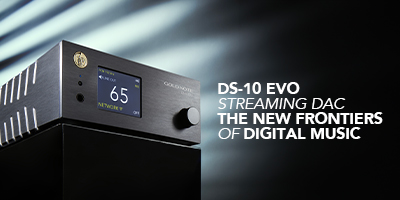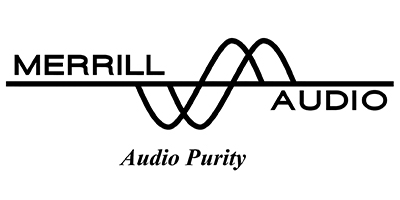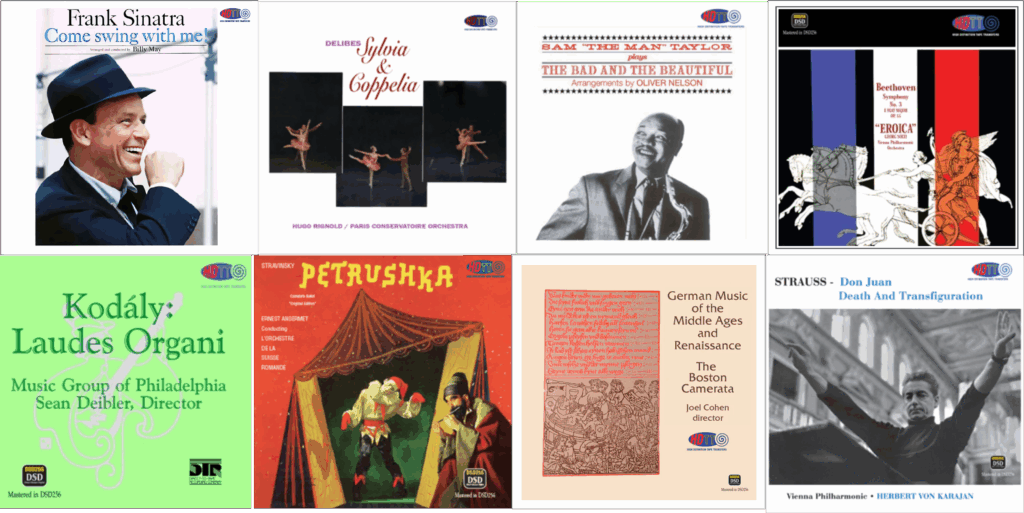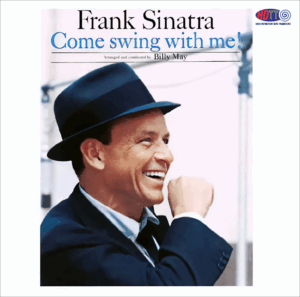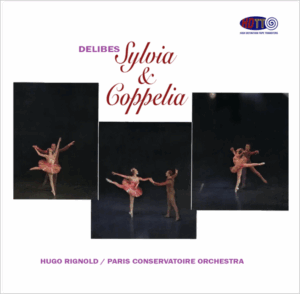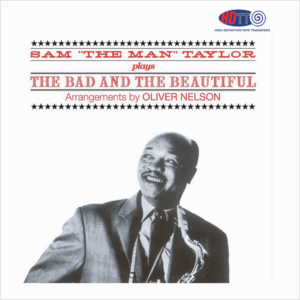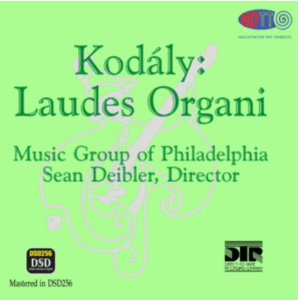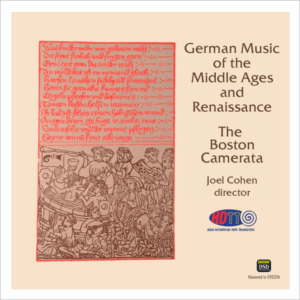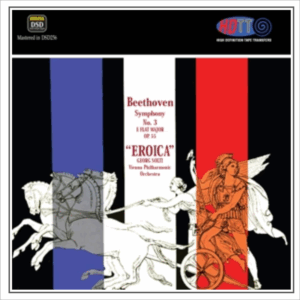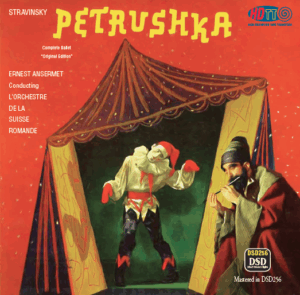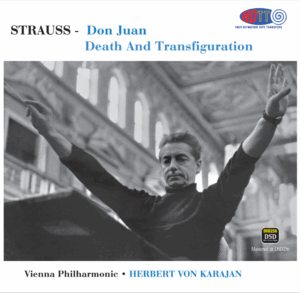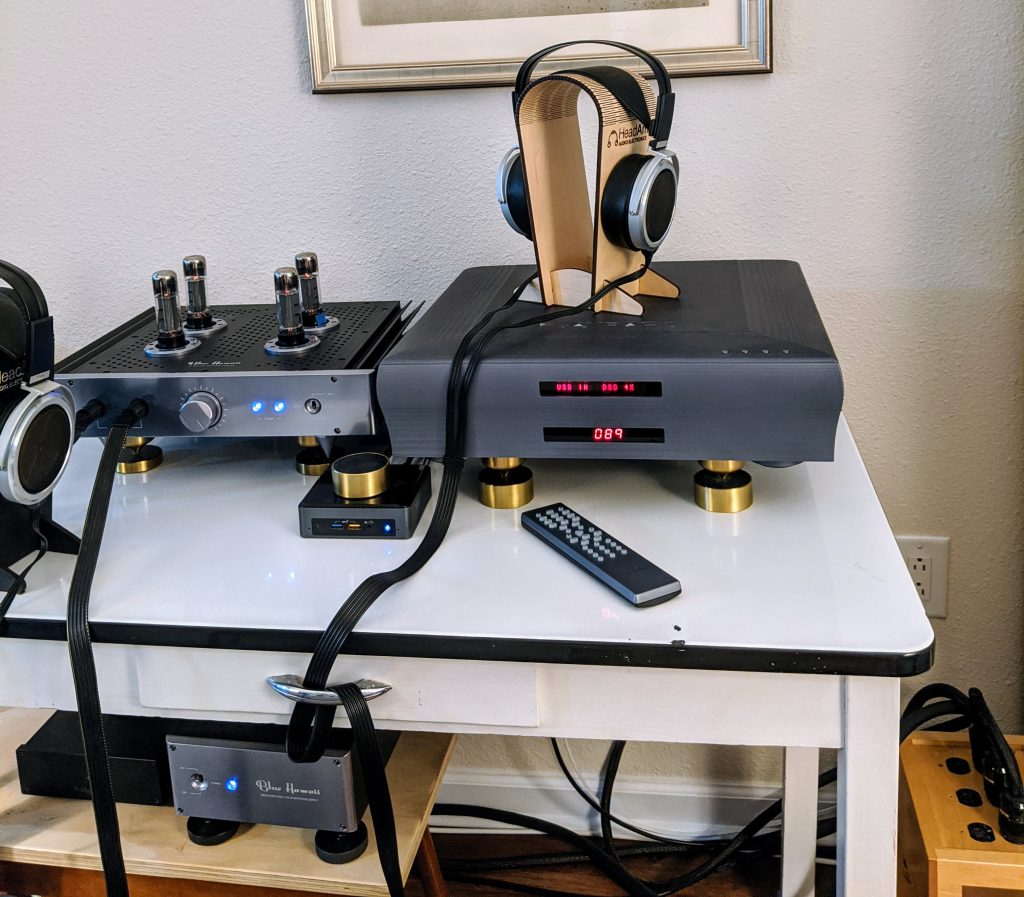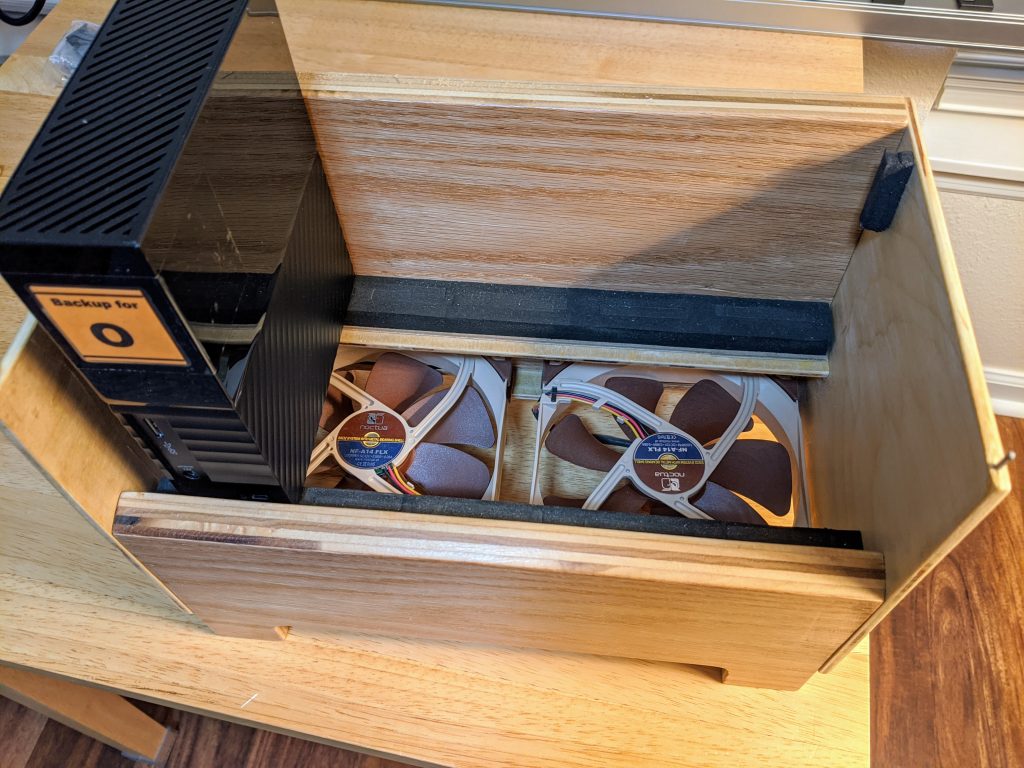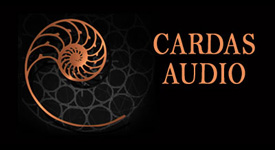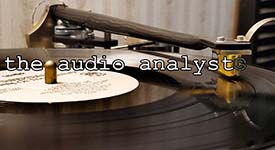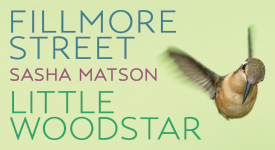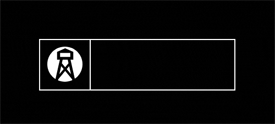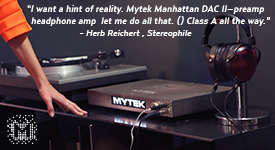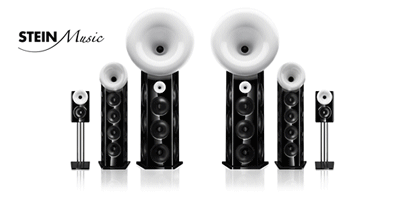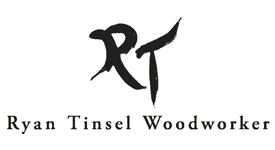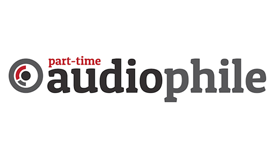Today's Recent Finds include several "not so recent" but long cherished releases from HDTT that I'd just not yet included in an article. Why, I don't know. It's a function of the astonishing wealth of excellent recordings available in the HDTT catalog. But they are popping up now as I work on a list I will soon publish of my Pure DSD256 transferred from tape "top-of-the-pile" list for outstanding sound quality. That list will come in another week or so, hopefully. So, today you get some things new and some things long past due that I should have written about some years ago. Hope you enjoy.
Frank Sinatra, Come Swing With Me! HDTT 1961 2025 (DSD256, DXD) HERE
This is Frank Sinatra's final swing session album with Capitol Records before making the complete switch to his new label Reprise. (He did release a final Capitol album of torch songs, Point of No Return. And Capitol did thereafter release several compilation albums out of earlier recording sessions.)
Some complain that Sinatra's heart was already with his new label and he just didn't make the commitment to recording this album that he had in earlier collaborations with Billie May (Come Fly With Me! and Come Dance With Me!). I just don't hear that. Yes, it is not as strong as those other two albums, which are among his best. But he's not just dialing it in on this "contract album"—not a bit.
Sinatra's ability to mold a song and pull out it's emotional content is a great as any in the craft. And he's all-in on this recording. Highlights for me on this album: "Day by Day," "Almost Like Being in Love," "I've Heard that Song Before."
A few comments on the recording quality... Billie May chose not to use any reed instruments or strings in these arrangements. So it is strikingly brass heavy. Coupled with the pronounced percussion, it really bounces along—for better or worse, the instrumentation has an impact. Also Capitol applies a very wide, perhaps extreme, stereo miking in this recording which leads to a bit of an unnatural perspective on the band. And, Sinatra seems to be more separated from the band than in other recordings. It is as if he is in a recording booth and the band is elsewhere. But, all of that aside, the sound quality is clean, open, and very dynamic.
If you are a Frank Sinatra fan, this will be a good addition to your collection, and in better sound quality than the LPs. If you are just becoming acquainted with Sinatra, you might first consider: Come Dance With Me! (HERE) and Only The Lonely (HERE), both previously reviewed and both in even better sonics.
Delibes Sylvia & Coppélia, Hugo Rignold, Paris Conservatoire Orchestra. HDTT 1959 2025 (DSD256, DXD) HERE
Few recording engineers have been able to capture the beautifully natural mid-house perspective as well as Decca recording legend Kenneth Wilkinson (when left to his own aesthetic instincts). These are lovely performances by Hugo Rignold and the Paris Conservatoire. Recorded 2 and 4 May 1959 at the Maison de la Chimie, Paris, but not released until 1961, the sound is luscious early Decca (on contract to RCA).
Yes, as expected, it is a bit tubey in the nicest possible way, and a bit lacking in the ultimate edge definition we might expect from modern recordings, but oh my! It is delightful. And it is transfer from an LP, an RCA 1S/1S original pressing—very resolving, nicely detailed, utterly silent backgrounds, with one caveat. The opening of Track 1 is a huge crescendo of sound from the orchestra, but the sound is not well-resolved. Once this finishes, all settles down and the remainder of the transfer plays very well, with all the virtues of good RCA Shaded Dog releases. So, I am guessing this anomaly a pressing issue, which is always a randomly occurring challenge with vinyl LPs.
Another very nice release in HDTT's ongoing Vinyl Record Restoration series. Keep 'em coming!
Oh, did you want to know something about the music? Ann tells me I really must remember to talk about the music on these albums. So here you go... Delightful. Here we have selected portions (suites, if you will) of two of Delibes most popular works. They can withstand comparison to Tchaikovsky's great trio. Coppelia is all froth and frivolity, a feast of musicality and fun. Sylvia is much meatier stuff, a romance filled with sighs of longing and the thrill of infatuation. Set in antiquity, the ballet literally places love on a pedestal in the person of the Greek god Eros. Both are nicely played here.
Conductor Hugo Rignold (1905-1976) did not make a large number of recordings, so it's perfectly fair that you may not be familiar with him. But, his sensibilities are quite fine, and he can lead an orchestra on a merry romp. He is perhaps best remembered as musical director of the Royal Ballet (1957-1960) and conductor of the City of Birmingham Symphony Orchestra (1960–1968). His specialty was ballet and he recorded several for Decca/RCA, including the Delibes here and also a rather nice Prokofiev's Cinderella, For a interesting summary of his background and some rather amusing anecdotes, I recommend you read Christopher Howell's article about him, HERE.
Sam "The Man" Taylor Plays The Bad And The Beautiful. HDTT 1962 2025 (DSD256, DXD) HERE
Bob Witrak has an extensive knowledge of music and artists, and when he recommends listening to something. I go listen. Almost invariably I find his recommendation right on target, as it is here.
For this album, which I'd never known before, Bob writes: "The Bad and the Beautiful is more than a collection of film themes; it is a meditative journey through emotion and tone. Sam "The Man" Taylor, with his expressive tenor saxophone and keen interpretive instincts, proves that there is great depth in simplicity. This album, quiet and unassuming though it may be, is a reminder that jazz's power lies not only in its complexity but also in its capacity to touch the soul. In that regard, Taylor succeeds magnificently...Taylor's album asks the listener to slow down. To savor the sound of a breath through a horn. To re-experience familiar melodies as if they were being whispered for the first time."
The liner notes expand this, commenting that Taylor's music is a pleasant return to "the cinematic, the sentimental, the intimately melodic" from where jazz had been living the prior number of years. "Moodsville, a sub-label of Prestige Records, was dedicated to the slow and the smooth—ballads, standards, and gentle swing designed for 'mood listening.' Taylor's album fits perfectly into this context, aligning with the output of players like Gene Ammons and Coleman Hawkins during their more romantic phases. Yet Taylor brings a subtle R&B sensibility to the project. His phrasing hints at the blues; his vibrato recalls the pathos of soul ballads. This blend gives the album a quiet intensity that prevents it from sinking into mere background music."
I'll second all of that. Nice to hear some warm lyrical sounds from the sax once again.
Recorded by Rudy van Gelder, it has all the van Gelder characteristics for good and ill. The stereo sound is still, as of 1962, panned pretty much hard left and hard right with sax in your left speaker and guitar in your right speaker, piano no particularly well reproduced, and percussion floating somewhere in between. But that notwithstanding, the music is what we're here for, and the music is a nice treat.
Kodaly Laudes Organi, Music Group of Philadelphia, Sean Deibler director. HDTT/DTR 1981 (Pure DSD256) HERE
I had not listened to this album for several years and revisited it as I was working on my Pure DSD256 from Analog Tape: My Top of the Pile list. This is an incredibly good recording, with excellent performances by the Music Group of Philadelphia singers and organist. It certainly stands as reference quality for its clarity and capture of detail in a large natural acoustic of St. Peter's Church, New York City. So, do I include it or not? I'm undecided. We'll see. In any event, the Kodaly Laudes Organi (22-minutes) and his Matra Pictures (10-minutes) are well worth hearing, as are the accompanying Four Slovak Folk Songs by Bartok. Recommended to all who enjoy choral and organ music.
German Music Middle Ages and Renaissance, The Boston Camerata. HDTT 1978 2023 (Pure DSD256) HERE
Transferred from the original Desmar master tapes in Pure DSD256, this 1978 recording is simply superb. The Boston Camerata directed by Joel Cohen delivers a performance that more than matches competing European period instrument performances. It features demonstration quality sound and fantastic performances. The performers sound as if they are in the same room as you. This is not to be missed!
The album, which includes vocal works, both solo and choral, alongside instrumental pieces, features a variety of music, including works from the Minnesinger tradition, the Ars Antiqua period, and music from the 14th-16th centuries. It highlights both sacred and secular music, showcasing the diverse musical styles and forms that flourished in Germany during these eras.
Beethoven Symphony No. 3, Solti Vienna Philharmonic Orchestra. HDTT 1959 2019 (Pure DSD256) HERE
And yet another album I've note yet reviewed but will be including in my Top of the Pile list. So, time to offer some comments about it. Recorded by Decca in 1959 in the Sofiensaal, Vienna by the ever excellent engineering team of Gordon Parry and James Brown, with Christopher Raeburn and John Culshaw, producers. (How to find this since it is nowhere any of the record jackets? Look to the excellent Decca Classical Discography, 1929-2006 HERE.)
This performance has all of the best characteristics of Solti's muscular, propulsive style that work very well in this music. It is a dramatic performance. And it is supported by excellent engineering with outstanding capture of the orchestral soundstage and immense detail. Considered by many a landmark recording, the sound quality continues to be rarely matched.
This Pure DSD256 transfer from an excellent 15ips 2-track tape is an aural delight. HDTT has done a great job with this reissue. Highly recommended.
Stravinsky Petrushka, Ansermet, L'Orchestre De La Suisse Romande. HDTT 1957 2016 (Pure DSD256). HERE
I have definitely been remiss in not reviewing this great recording before now. This is another of many that I've listened to for years, but just have not managed to include in an article before now. Well, shame on me and apologies to all. Because this is one of the great performances of Petrushka available in the catalog. Even after nearly 70 years since its recording, few have equaled it and none have superseded it in my affections. The work by Ansermet and the OSR is simply spot on, with all the character and wry humor one could wish for in this music.
And in this Pure DSD256 transfer, the sound quality is stunningly good. Recorded by Decca recording team of producer James Walker and engineer Roy Wallace in Victoria Hall, Geneva, Switzerland, this recording will demonstrate for you just what a wonderful recording space was Victoria Hall for Decca. The soundstage achieved, and the resolution of detail within the orchestra, will also show you how much we've lost from those golden days of minimal numbers of microphones and reliance on careful placement.
Those with an interest in the roots of classical stereo recording my wish to read my earlier article from Issue 118, The Golden Age of Decca Stereo: The Recordings Engineered by Roy Wallace (HERE).
Richard Strauss, Don Juan, Death And Transfiguration, Herbert von Karajan, Vienna Philharmonic. HDTT 1960 2018 (Pure DSD256) HERE
This is Herbert von Karajan in his still relatively young age, before he started that journey down the road of ever greater self-aggrandizement and self-indulgence in his conducting. This performance shows why so many people embraced and revered his performances. I'm sure there will be many who do not agree with my aversion to the later Karajan. But this Karajan is wonderful!
These are two of the great Richard Strauss (1864-1949) works for orchestra, Don Juan (1888) and Death and Transfiguration (1889), the first of which propelled Strauss to fame and the second cemented his place. And the performances by Karajan and the VPO are nonpareil. They are classic interpretations of these works. Karajan would later record these with the Berlin Philharmonic (he performed them regularly throughout his career), but for me these 1960 performances are my favorites. Why? Because they are straight forward, very direct, very powerful, and not stretched all out of shape. And, the recording quality given him by the Decca recording team is about as good as orchestral recordings get.
Recorded for Decca by producer John Culshaw and engineer James Brown, this was an absolute ace recording team. Erik Smith takes on the producer duties in Death and Transfiguration, with no loss of excellence in the result.
HDTT gives us this release in a Pure DSD256 transfer from a 2-track 15ips tape, and the sound quality is stunningly good. The recording as heard in this reissue is absolutely clean and clear, utterly lucid, with frequency extension in both directions that is both pristinely delicate at the top and powerful at the bottom, and all of this with the immense dynamics, openness, and air that one only hears in excellent reel-to-reel tapes, almost never in the vinyl. Well done!

